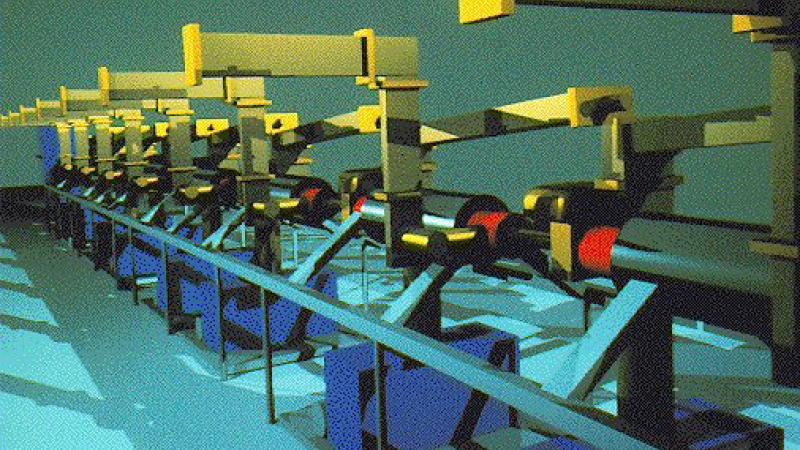Upgrades to electron linear accelerator will give Rensselaer students access to some of the nation’s most advanced technology for nuclear research
January 7, 2016

The U.S. Department of Energy (DOE) has provided a $9.44 million grant to help refurbish and upgrade the electron linear accelerator (LINAC) at the Gaerttner LINAC Center at Rensselaer Polytechnic Institute (RPI). Once the upgrades are complete, the Institute will be home to some of the nation’s most advanced technology for measuring neutron interactions with nuclear materials.
Despite their sophistication, today’s nuclear models cannot predict neutron interactions with the accuracy required for certain applications. In such cases, experiments—like those conducted at the LINAC center—provide the missing information. Accurate nuclear data are important for the design of safe, reliable nuclear reactors and for reducing uncertainties in criticality safety applications.
The DOE grant was secured through the Naval Reactors Program and the Nuclear Criticality Safety Program. Funds include $7.4 million awarded directly to Rensselaer and $2.04 million to SLAC National Accelerator Laboratory to help design the replacement LINAC parts. The grant will also help fund a state-of-the-art research and education laboratory where nuclear engineering students will have access to LINAC experiments that reinforce theory and methodology discussed in class. Students also will be able to conduct experiments as part of research.
“This grant is the latest recognition of the essential role played by Rensselaer in advancing nuclear research worldwide,” said Rensselaer President Shirley Ann Jackson. “The high-accuracy nuclear interaction data generated at our Gaerttner LINAC Center has broad applications and is used by researchers and nuclear engineers around the globe. These investments and renovations will elevate our capabilities and ensure that we continue to meet current and future nuclear data needs.”
“Rensselaer Polytechnic Institute’s research is vital to developing new energy technology and protecting our national security,” said Senator Kirsten Gillibrand. “The Rensselaer community has long played a key role in this critically important field, and these federal funds will help ensure it remains a leader in research for years to come.”
The total project cost—for the LINAC upgrades and lab—is nearly $12 million. Rensselaer will provide the remaining funds.
The upgrades will represent the most significant overhaul of the LINAC in its 54-year history and will give Rensselaer “capabilities that are second to none for understanding and predicting resonance neutron interactions,” said Yaron Danon, director of the Gaerttner LINAC Center and a professor in the Department of Mechanical, Aerospace, and Nuclear Engineering.
Much of the research conducted at the center involves measuring how neutrons interact with metals, composites, and other materials at the nuclear level. Government and industry rely on the resulting high-quality data to help drive improvements in nuclear technology and safety. In fact, the American Nuclear Society has designated the Gaerttner LINAC Center as a Nuclear Historic Landmark in recognition of its contributions to the generation of accurate nuclear data for the design of safe, efficient nuclear power reactors.
In addition to providing essential data, the center is instrumental in developing the nation’s nuclear engineering workforce. “We not only conduct the research,” Danon said, “we also provide the human resources for the United States to maintain its capabilities and leadership in the nuclear arena.
“All the work we perform here is done by our students. If we develop a system for neutron scattering, for example, it is invented by our graduate students,” he added. “The new lab will provide similar opportunities for our undergraduate students, who will then graduate with hands-on experience with a state-of-the art linear accelerator.”
As Rensselaer embodies The New Polytechnic, students are focused on the great challenges humanity faces—on the necessity of collaborating across disciplines, sectors, and global regions—and on developing and employing advanced technologies to address them. The improvements being made to the Gaerttner LINAC Center will prepare Rensselaer nuclear engineering students to take their place at the leading edge of this critically important field.
The Rensselaer nuclear engineering program dates back to the late 1950s and is among the oldest and most respected in the nation. The university bestowed its first doctoral degrees in nuclear engineering in 1962 and its first bachelor’s degrees in nuclear engineering in 1967. The program remains among the top-ranked nationwide.